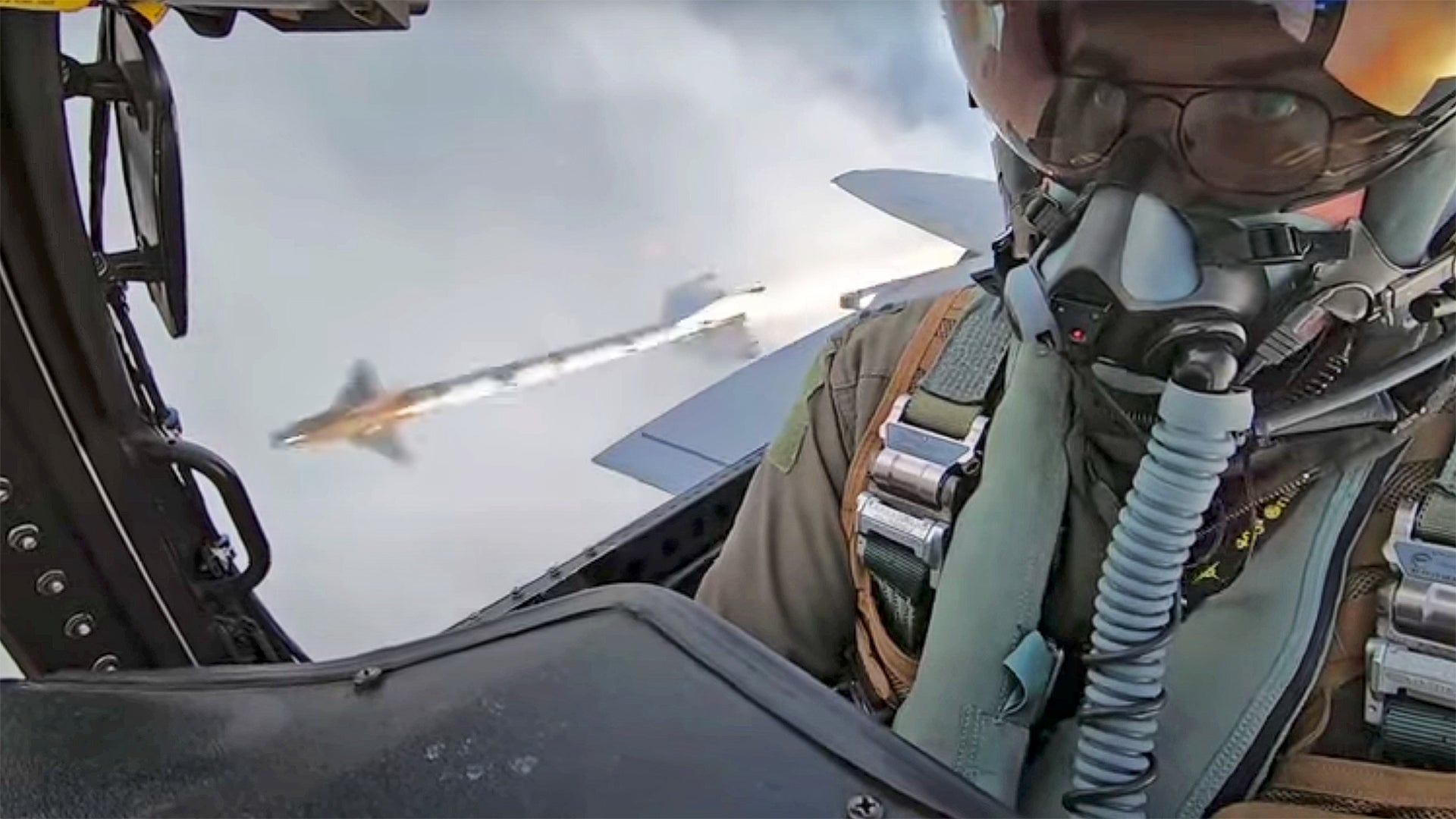The U.S. Air Force has released video and photos of an F-15C Eagle fighter jet destroying a towed target at very close range with one of its Sidewinder air-to-air missiles, during a mission flown off the coast of the United Kingdom. It’s relatively rare imagery showing one of the air superiority fighters doing just what it was designed to do — being “the baddest guy in the air,” in the words of three-time MiG-killer and retired Eagle pilot Cesar “Rico” Rodriguez.
The photo sortie took place during a live-fire exercise over the Atlantic Ocean on December 8, 2020. The event was run by the 493rd Fighter Squadron, the “Grim Reapers,” which has its F-15Cs based at RAF Lakenheath, England, as part of the resident 48th Fighter Wing, the “Liberty Wing.”

Video of the event shows a view from the cockpit as a Sidewinder missile streaks off one of the underwing pylons of an F-15C Eagle, which then abruptly climbs away. From another aircraft, we then see the heat-seeking missile slam into the target, leaving sparks and debris in its wake nearly as the launching F-15 passes it by.
You can watch a video of the exercise here:

According to the U.S. Department of Defense, “The training helped pilots gain real-world experience by using infrared-guided missiles aimed at flare packs being towed 300 feet behind a subscale drone.” The press release added that “the training enabled Liberty Wing fighter pilots to meet mission requirements, becoming combat-ready in a wartime environment.”
It was not revealed what type of drone was used, but this may well have been launched from Aberporth, on the coast of west Wales, which is a center of unmanned aerial vehicle testing in the United Kingdom.


The missile, meanwhile, was a training version of the AIM-9M Sidewinder. While the “Mike” Sidewinder dates from the later years of the Cold War, it’s still regularly carried by F-15s and other fighters, despite the introduction of the far more capable AIM-9X Sidewinder. Nevertheless, there is some commonality between the two weapons, as the AIM-9X retains the rocket motor, fusing system, and warhead of the AIM-9M.


The “special air training missile” was specifically the NATM-9M version, a dedicated training round that carries the usual motor and infrared guidance package, but which has an inert warhead and also adds special test and evaluation equipment to check the parameters of the engagement and the missile’s reliability. Exactly how many missiles were launched was not revealed, but at least four F-15s apparently took part in the maneuvers.


These types of live-fire exercises frequently take place prior to a fighter squadron being deployed to an operational theater. Best known are the Combat Archer exercises, also known as the Weapons Systems Evaluation Program (WESEP), which is the Department of Defense’s largest live-fire evaluation exercise involving air-to-air missiles. These events take place at Tyndall Air Force Base, Florida, and make use of training areas over the Gulf of Mexico.

Employing a live missile helps ensure the involved personnel are at the top of their game, by providing the pilot with a level of realism that can’t otherwise be replicated in a simulator, or with fully inert weapons that feature the infrared seeker to acquire a target, but which don’t then fly off the rail as they would in combat. The tests also serve to assess the effectiveness of the missiles involved, as part of ongoing evaluation.



It is not clear whether the 493rd Fighter Squadron’s recent exercise over the Atlantic is in conjunction with an upcoming deployment since these are not generally disclosed in advance by the Department of Defense, but the 493rd, like all of Liberty Wing, has a high deployment tempo.


Whatever the reason behind it, it will surely have provided a valuable opportunity to assess missile lifespan, as well as the performance of maintainers, aircraft armament specialists, and pilots alike.
Contact the author: thomas@thedrive.com
